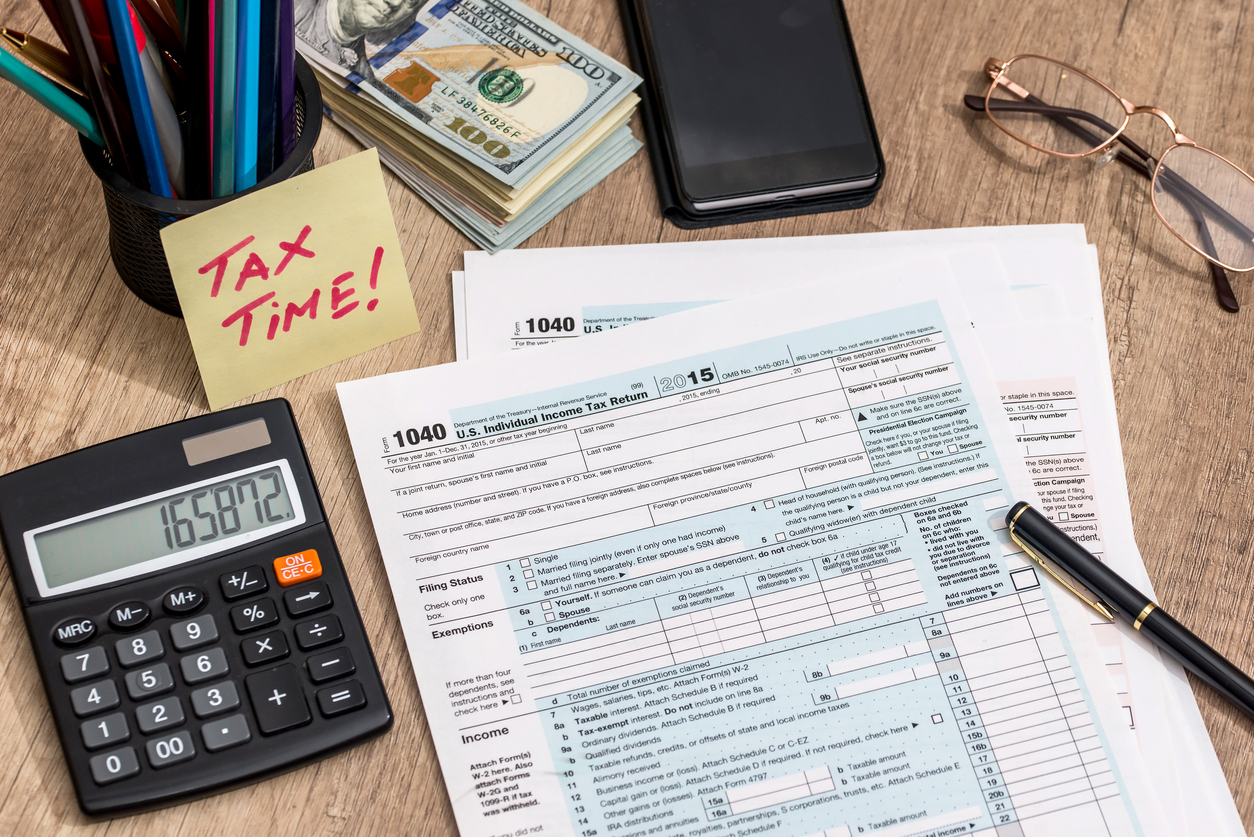Many taxpayers frantically completing their 1040s before the April 17 tax deadline are surely wondering: Where does it all go?
This year, Washington will spend a near-record $33,054 per household and collect $26,198 per household in taxes. The resulting budget deficit of $6,856 per household will bring the total national debt to nearly $170,000 per household.
Federal spending has soared more than $5,000 per household since 2007 and is projected to rise another $9,000 over the next decade (all numbers in this article are adjusted for inflation). Unless spending is reined in, similar tax increases must eventually result.
Washington will spend this year’s $33,054 per household as follows:
Social Security/Medicare: $12,401. The 15.3 percent payroll tax, split evenly between the employer and employee, covers most of Social Security's and a small portion of Medicare's costs. The typical couple retiring today will receive Social Security benefits 13 percent higher than their lifetime contributions, and Medicare benefits that are triple their lifetime contributions into the system, even after adjusting for inflation and net present values As 74 million retiring baby boomers are added to this fragile system, paying all promised benefits would require payroll taxes rising to nearly $30,000 per household over the next few decades.
Anti-poverty programs: $6,112. Half of this spending subsidizes state Medicaid programs that provide health services to poor families. Other low-income spending includes: Temporary Assistance for Needy Families (TANF), food stamps, housing subsidies, child care subsidies, Supplemental Security Income (SSI) and low-income tax credits. President George W. Bush increased anti-poverty spending from $3,600 to $4,700 per household, and President Obama expanded it past $6,000, mostly due to ObamaCare costs.
Defense: $5,046. The defense budget covers everything from military paychecks, to operations in Iraq and Afghanistan, to the research, development and acquisition of new technologies and equipment. Defense spending averaged $6,500 per household during the Cold War (1947-1991), before the Soviet collapse allowed late 1990s-lawmakers to slash defense to $3,800 per household. After the War on Terror pushed it back to $6,700 per household by 2010, deep cuts put defense on a path to $4,600 within the next decade. Instead, extending the recent budget deal would level defense spending off at $5,100 per household.
Interest on the national debt: $2,434. The federal government is $21 trillion in debt. It owes $16 trillion to public bond owners, and the rest to other federal agencies (mostly to repay the Social Security trust fund, which lawmakers raided annually before the program fell into permanent deficit in 2009). Record-low interest rates have recently held down interest costs. However, the national debt is in the process of surging from $10 trillion to nearly $35 trillion between 2008 and 2028, which will push annual net interest costs to nearly $6,000 per household — or double that cost if interest rates rise back to normal levels.
Veterans’ benefits: $1,390. The federal government provides income and health benefits to war veterans. Spending has doubled since 2001 as new wars brought new veterans.
Federal employee retirement benefits: $1,098. A portion of this cost is offset by federal employee payroll contributions.
Justice administration: $546. Justice spending includes federal attorneys and prisons, as well as law-enforcement grant programs. Post-9/11 homeland security costs have modestly expanded this category.
Education: $537. Education spending is primarily a state and local function; 9 percent of the K-12 total comes from Washington. Most federal dollars are spent on low-income school districts, special education and college student financial aid.
Health research/regulation: $533. This spending includes the National Institute of Health, Centers for Disease Control, Food and Drug Administration and dozens of grant programs for health providers.
Highways/mass transit: $487. The 18.4 cent per-gallon federal gas tax finances most of these costs. Washington subtracts an administrative cost and sends this money back to the states with numerous strings attached.
International affairs: $371. This includes foreign economic and military assistance, operation of American embassies abroad, and contributions to organizations such as the United Nations. International spending has nearly doubled since 9/11.
Disaster relief: $338. Hurricanes and national disasters in Puerto Rico, Florida, Texas, and elsewhere will cost taxpayers $43 billion this year — the most since Hurricane Katrina pushed these costs to $46 billion in 2006.
The programs listed above cover $31,293 per household. The remaining $1,761 is allocated to all other federal programs, including natural resources and the environment, unemployment benefits, economic development, farm subsidies, social services, space exploration, air transportation, and energy.
Are you getting your money’s worth? How about our kids, who will inherit much of the bill?
This piece originally appeared on The Hill.
Brian Riedl is a senior fellow at the Manhattan Institute. Follow him on twitter @Brian_Riedl.
Interested in real economic insights? Want to stay ahead of the competition? Each weekday morning, E21 delivers a short email that includes E21 exclusive commentaries and the latest market news and updates from Washington. Sign up for the E21 Morning Ebrief.
